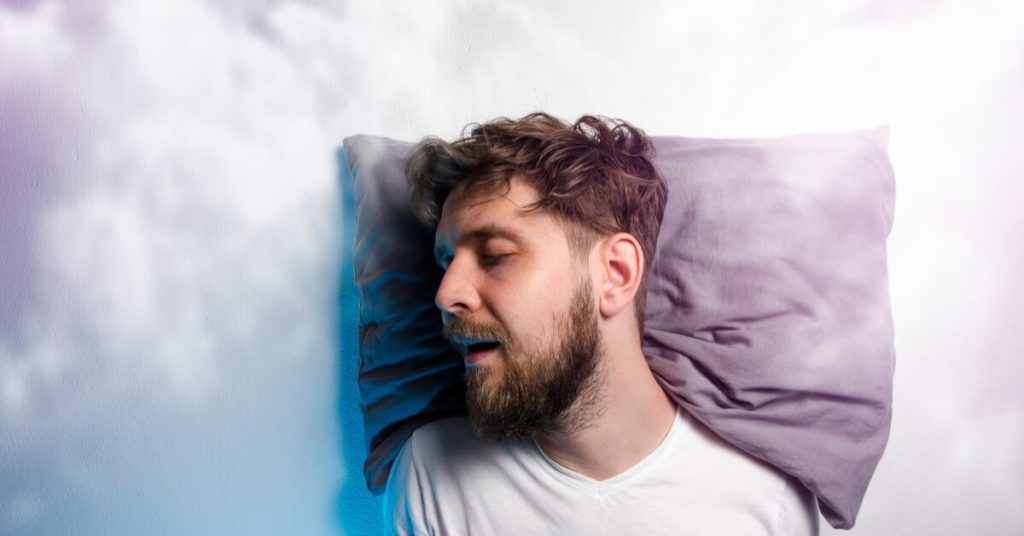
Medically reviewed by
Dacelin St Martin, MD
Triple board-certified in Sleep Medicine,
Internal Medicine, and Pediatrics.
What Are Dreams? | When Do You Dream? | Reasons for Dreaming |
Introduction
For many years, dreams and sleep were shrouded in mystery. Scientists and philosophers have tried unsuccessfully to decipher the mystery behind dreams throughout the centuries.
Dreams were attributed to spirits in ancient civilizations. The ancient Greek philosophers thought that dreams were cryptic messages from the gods or one’s soul.[1]
Hippocratic doctors in ancient Greek society employed dreams as predictive and diagnostic indicators of healthy or diseased internal organs.[2] They thought that the soul keeps an eye on the body during sleep and alerts the mind to any future problems that may express themselves in dreams.[2]
By interpreting patients’ dreams, the Hippocratic physician made predictions regarding the health of the patient’s body, the effects of nutrition and exercise, and the need to change the patient’s treatment to prevent illness progression.[2]
In the nineteenth century, Sigmund Freud, the pioneer of psychoanalysis, postulated that dreams portray unconscious desires, ideas, fulfillment of desires, and aspirations.[1]
In recent years, the advent of technology and advancements in medicine has helped unravel some of these mysteries. However, there is still much left to be understood about dreams.
This article will highlight the fundamentals of dreams and why everyone dreams.
What Are Dreams?
Dreams are the thoughts, feelings, images, and sensations one has while asleep.[3]
They are generated by cerebral cortex activity. The cerebral cortex is the brain’s exterior layer responsible for higher-order cognitive processes.[4]
Dreams can be about many subjects and feelings, ranging from weird and elaborate narratives to sensations with no real substance.[5]
Also, one can experience emotions or engage in actions that one would typically be unable to do when awake. For instance, some blind people can have visual images in their dreams.[6]
The sleeper’s conscious mind does not control dreams, but they can appear real, even though the events they depict are implausible. When you dream, your brain generates a conscious-like experience on its own. The content of your dreams is usually your day-to-day life experiences and themes.

When Do You Dream?
You have to sleep to dream, and dreams can happen at any of the four stages of sleep; however, they are most frequent and intense during the rapid eye movement (REM) sleep stage.[7]
In the REM sleep stage, your brain’s activity is much higher than during the non-REM stages.[8] It’s why dreams are more frequent and distinct at this stage.
In REM sleep, dreams are often more delineated, fanciful, and fictional, even though the content of these dreams is essentially those of your conscious experience.
Non-REM dreams, on the other hand, tend to have more cohesive content, such as thoughts or memories that are tied to a particular time and place.
The Reason You Dream
The scientific community has made significant progress in understanding why everyone dreams.
Sleep experts have postulated different theories to explain the reason why everyone dreams. However, there is a need for more research and conclusive evidence.
Let us explore some of the possible reasons why you dream. They include:
1) Memory Consolidation
Dreams have been linked to memory building and consolidation.[1]
It implies that dreaming may perform a critical cognitive function of enhancing memory and information retrieval, which is corroborated by recent studies, showing that individuals with impairment to the parts of the cerebral cortex controlling memory and imagination have less vivid dreams.[9]
It implies that dreams may be a continuation of cognitive processes comparable to those encountered when one is awake.
2) Emotional Processing and Regulation
Studies have shown that dreams contribute to emotional regulation and processing, suggesting that one of the brain’s methods for controlling emotions includes the ability to connect with and rehearse emotions in different imagined settings when you dream.[9]
3) Innovation
Some sleep experts have linked dreams to creativity and innovation.[10] This finding is based on the fact that dreams that occur in the REM stage of sleep are frequently fictional or somewhat odd. Also, many people assert that dreams have inspired their artistic works and aided in problem-solving.
4) Wish Fulfillment
Sigmund Freud postulated this theory, the neurologist credited with establishing psychoanalysis. He believed that dreams were a sort of wish fulfillment.[1] They portray one’s unconscious wishes, concepts, fulfillment of desires, and ambitions. Studies corroborate this by revealing that suppressed thoughts can spring out during sleep.[11]
However, many sleep experts discredit Sigmund Freud’s work as pseudoscience.[12]
5) Synaptic Regulation
Many sleep scientists postulate dreams are how the brain cleanses itself of incomplete, erroneous, or redundant information.[14] It implies that your brain sorts through memories to determine which to retain and which to forget when you dream.
6) Inadvertent Cerebral Cortex Activity
According to this theory, dreams result from accidental brain activity during sleep. [13] They serve no function and have no significance.
Do Your Dreams Have Any Meaning?
Although there is no conclusive evidence to validate that dreams have significant meaning, some sleep experts have said that dreams can give information about a person’s mind and everyday life; others argue that their content is too inconsistent or confusing to be reliable sources of meaning.
Almost all sleep experts agree that dreams can have content that connects to real-life experiences, even if the content is altered or misinterpreted.
For instance, when people describe dreams, they frequently make mention of individuals they recognize perfectly.[15] While analyzing one’s dream may be vital to self-reflection, it is difficult to assert that dreams connote meanings relevant to everyday life based on available information.
References:
- Linden, Sander van der. “The Science behind Dreaming.” Scientific American, Scientific American, 26 July 2011, https://www.scientificamerican.com/article/the-science-behind-dreaming/.
- Askitopoulou, Helen. “Sleep and Dreams: From Myth to Medicine in Ancient Greece.” Journal of Anesthesia History, Elsevier, 7 Apr. 2015, https://www.sciencedirect.com/science/article/abs/pii/S2352452915200102.
- JM;, Manger PR;Siegel. “Do All Mammals Dream?” The Journal of Comparative Neurology, U.S. National Library of Medicine, https://pubmed.ncbi.nlm.nih.gov/31960424/.
- V;, Fernández V;Llinares-Benadero C;Borrell. “Cerebral Cortex Expansion and Folding: What Have We Learned?” The EMBO Journal, U.S. National Library of Medicine, https://pubmed.ncbi.nlm.nih.gov/27056680/.
- I;, Siclari F;Valli K;Arnulf. “Dreams and Nightmares in Healthy Adults and in Patients with Sleep and Neurological Disorders.” The Lancet. Neurology, U.S. National Library of Medicine, https://pubmed.ncbi.nlm.nih.gov/32949545/.
- Laboratory, 1Cognition Research. “The Structure of Laboratory Dream Reports in Blind and… : The Journal of Nervous and Mental Disease.” LWW, https://journals.lww.com/jonmd/Abstract/1982/05000/The_Structure_of_Laboratory_Dream_Reports_in_Blind.6.aspx.
- JF;, Pagel. “Nightmares and Disorders of Dreaming.” American Family Physician, U.S. National Library of Medicine, https://pubmed.ncbi.nlm.nih.gov/10779247/.
- L;, Payne JD;Nadel. “Sleep, Dreams, and Memory Consolidation: The Role of the Stress Hormone Cortisol.” Learning & Memory (Cold Spring Harbor, N.Y.), U.S. National Library of Medicine, https://pubmed.ncbi.nlm.nih.gov/15576884/.
- EJ;, Wamsley. “How the Brain Constructs Dreams.” ELife, U.S. National Library of Medicine, https://pubmed.ncbi.nlm.nih.gov/32508304/.
- D;, Barrett. “Dreams and Creative Problem-Solving.” Annals of the New York Academy of Sciences, U.S. National Library of Medicine, https://pubmed.ncbi.nlm.nih.gov/28640937/.
- Kröner-Borowik T;Gosch S;Hansen K;Borowik B;Schredl M;Steil R; “The Effects of Suppressing Intrusive Thoughts on Dream Content, Dream Distress and Psychological Parameters.” Journal of Sleep Research, U.S. National Library of Medicine, https://pubmed.ncbi.nlm.nih.gov/23679926/.
- JH;, Flaskerud. “Dreaming.” Issues in Mental Health Nursing, U.S. National Library of Medicine, https://pubmed.ncbi.nlm.nih.gov/28956677/.
- Nir, Yuval, and Giulio Tononi. “Dreaming and the Brain: From Phenomenology to Neurophysiology.” Trends in Cognitive Sciences, U.S. National Library of Medicine, Feb. 2010, https://www.ncbi.nlm.nih.gov/pmc/articles/PMC2814941/.
- A;, Voss U;Klimke. “Dreaming during REM Sleep: Autobiographically Meaningful or a Simple Reflection of a Hebbian-Based Memory Consolidation Process?” Archives Italiennes De Biologie, U.S. National Library of Medicine, https://pubmed.ncbi.nlm.nih.gov/30324606/.
- JA;, Kahn D;Stickgold R;Pace-Schott EF;Hobson. “Dreaming and Waking Consciousness: A Character Recognition Study.” Journal of Sleep Research, U.S. National Library of Medicine, https://pubmed.ncbi.nlm.nih.gov/11386201/

